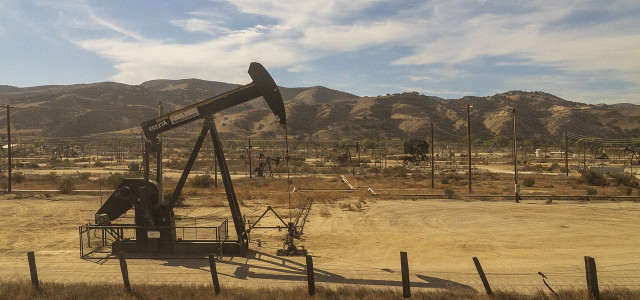How does fracking work and why is it controversial? Will it help to end the energy crisis or will it help to end the world? Find out by reading more.
Fracking — or hydraulic fracturing — is a technique used to drill for gas and oil from shale rock. Fracking in the US has revolutionized the energy industry, but concerns about the practice are growing globally. In fact, fracking is a highly controversial topic.
Fracking has swept through the US in recent years. It is described by Forbes as “perhaps the most important energy discovery in the last half century” — due to its massive contribution towards American self-sufficiency in domestic energy production.
However, fracking is prohibited or regulated in many US regions, the EU and other countries due to various concerns about this significant energy discovery. So, is it good or bad? What exactly is fracking? How does fracking work? Let’s find out.
How Does Fracking Work?
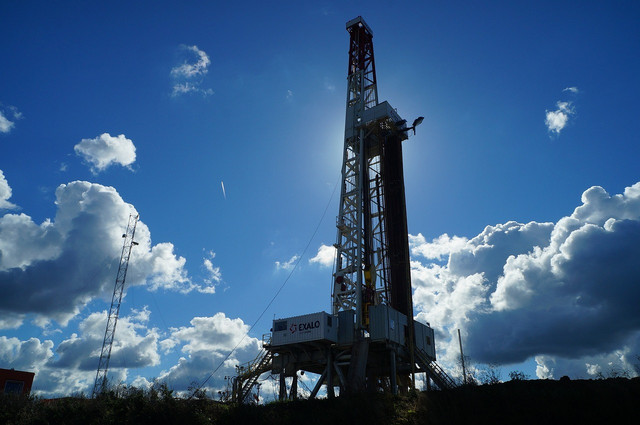
Fracking involves drilling deep into shale rock and injecting a mixture of water, sand and other chemicals into the holes under high pressure — causing the rock to fracture and subsequently releasing the trapped gas or oil. A hole — called a wellbore — is drilled deep into the rock and sediment. Drilling is done vertically to begin. Horizontal drilling then takes place before fracturing fluid is blasted into the holes.
Fracturing fluid is primarily water-based with a small amount of additives or chemicals. The process is used to create new channels for extraction or to extend existing ones. It also allows extraction from impermeable — or difficult to drill — rock that would otherwise be inaccessible. Fracking is versatile and sites are numerous and varied — from offshore, to onshore and even desert lands — which is one of the technique’s major benefits.
Where Fracking Is Allowed, and Forbidden
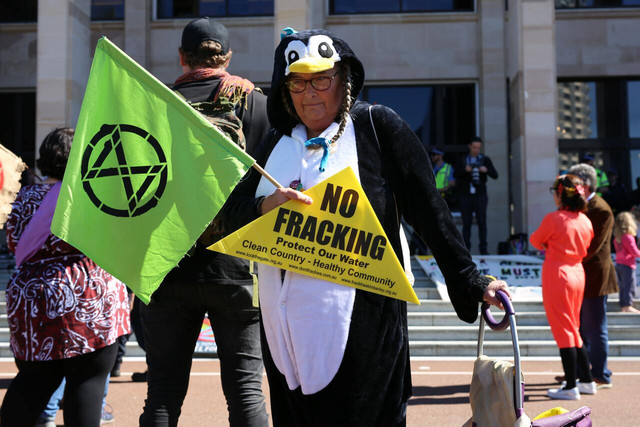


Fracking has been documented in more than 30 US states and is particularly widespread in North Dakota, Pennsylvania and Texas. It is also expanding into areas like California, New Mexico and Nevada. In the 1940s, explosives used in rock fracturing were replaced with high-pressure injections of liquids — giving birth to the concept of hydraulic fracturing.
At the beginning of the 21st century, a type of fracturing fluid — called slickwater — and the innovation of horizontal drilling made fracking hugely popular and successful.
Over 1.7 million US wells have now been fractured, and it is a hugely popular technique for energy extraction across America. According to National Geographic:
- One of the most active sites of fracking for oil is the Bakken shale formation, which spans from western North Dakota and Montana through the southern part of Saskatchewan in Canada.
- Fracking is used to extract natural gas from the Marcellus shale formation in the northern Appalachian Basin, which stretches through New York, Pennsylvania, Ohio, Maryland, West Virginia, and Virginia.
- Fracking is also used in Canada, the Sichuan basin in China, and the Taranaki shale formation in New Zealand.
Fracking is banned in many EU countries, including Germany, France, Bulgaria, Ireland and Spain. In the UK, a ban on fracking has been reinstated by Rishi Sunak’s new government after the practice was briefly legalized again by the short-serving Liz Truss and her cabinet — which caused widespread protest across the country.
Fracking is not permitted in Australia, either. Authorities in Brazil, Argentina, South Africa and other areas are in disagreement, with some regions prohibiting the practice and others permitting it.
Why Are Environmentalists Fracking Out?
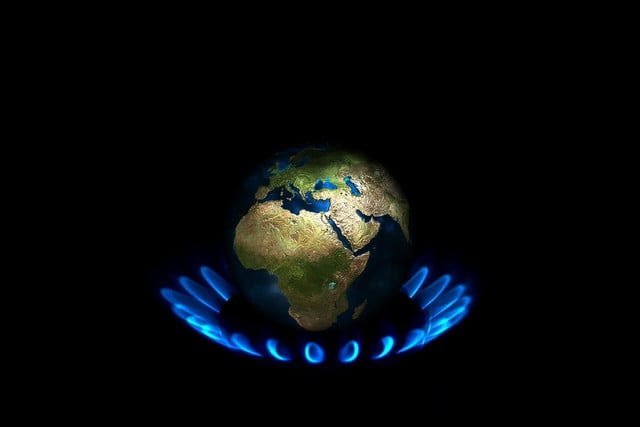


According to The Guardian, the fracking boom here in America could tip the world to the edge of the climate disaster — and not just because it involves extracting fossil fuels. Many others agree, which is why fracking has been banned or heavily regulated in so many regions across the globe. The technique itself, and the contents of fracturing fluid, have both come under heavy scrutiny and are now linked to a wealth of negative outcomes, including air pollution, water consumption and pollution, earth tremors, and risks to humans, wildlife and the climate.
Read more: Which Human Activities Contribute to Air Pollution — And How?
Water Use and Pollution
Fracking uses massive volumes of water — up to 10 million gallons per well — and can strain local supplies. Research from the United States Geological Survey (USGS) has shown that water consumption can range from as little as 2,600 gallons to as much as 9.7 million gallons per well in the US. It isn’t just water consumption that concerns scientists and environmentalists, though, as water contamination is also a major concern.
Acis and Other Chemicals
Different chemicals — like acids to dissolve minerals or corrosion inhibitors to protect steel structures in the well — are added to fracturing fluid. Fracturing fluids often contain other highly toxic chemicals, including methanol, benzene, naphthalene and trimethylbenzene. The Environmental Protection Agency (EPA) identified over 1000 chemicals used in fracking formulas between 2005 and 2013, many of which are considered detrimental to human reproductive and developmental health.
Biggest Threats to Water
Both fracturing fluids and fracking wastewaters can, therefore, be highly contaminated by organic and inorganic compounds, salts, acids and possible radioactive material. The EPA acknowledges the existence of data gaps and uncertainties that limited the EPA’s ability to fully assess the potential impacts of fracking on drinking water resources locally and nationally. The report did find that the biggest threats from fracking to water include:
- Spills and leaks of fracking fluids
- The injection of fluids into inadequately built wells
- Poor wastewater management practices
- Discharge of inadequately treated hydraulic fracturing wastewater to surface water
- Disposal or storage of hydraulic fracturing wastewater in unlined pits, contaminating groundwater resources
- Water withdrawals for hydraulic fracturing in times or areas of low water availability
The Natural Resources Defense Council (NRDC) cites similar dangers and risks to fresh water supplies. They also highlight that underground risks to water surround fracking, too, including improperly constructed and/or maintained oil or gas wells.
Over-extended fractures, neighboring wells and existing natural fractures nearby can all act as migration pathways for oil, gas, formation water, drilling fluid, or fracking fluid to contaminate groundwater.
Digging for Human and Planetary Decay?
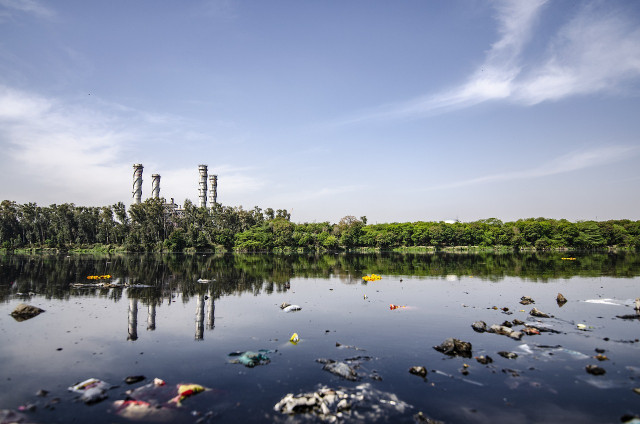


Fracking damages the environment in more ways than just smashing up rock formations, polluting water systems and releasing fossil fuels. It pollutes the air when waste water is dumped into pits and then evaporates, according to the Center for Biological Diversity. This process can release dangerous petroleum hydrocarbons — such as benzene, toluene and xylene — that toxify the air and damage planetary and human health.
Fracking also releases large amounts of methane — a highly potent greenhouse gas. The timing between the growth of fracking across the US and Canada directly correlates to the huge increases in methane emissions seen over the same period and is likely to blame for them, according to some experts. Fracking also allows access to huge fossil fuel deposits that were once inaccessible — adding to the ongoing climate crisis.
Effects on Human Health
People with asthma living near fracking wells in Pennsylvania are 1.5 to four times more likely to have asthma attacks than those who live further away. There is also growing evidence to suggest strong links between fracking and other disorders — including childhood cancer, the premature death of elderly people, respiratory issues and endocrine disruption, among other health complaints.
Findings from studies of nine years of birth records — totaling 1.1 million births — from throughout Pennsylvania show that babies born within three kilometers of a fracking well are at risk of poor health outcomes. Babies born within one kilometer of a site were 25 percent more likely to be born at a low birth weight than those living more than three kilometers away.
Wildlife and Ecosystems Suffer
Like humans, plants and animals also fall victim to the negative impacts of how fracking works. Many are displaced as wells, and sites are developed, while wildlife and ecosystems suffer and die when fracking fluid pollutes the ground, air, streams and rivers.
Birds are also poisoned by chemicals released during the process. The Center for Biological Diversity point out that 100 endangered and threatened species live in the counties where fracking is set to expand.
Read more: What Does “Endangered” Mean? A Closer Look
Differing Voices
A 2017 report by Energy in Depth, launched by the Independent Petroleum Association of America (IPAA) in 2009, says otherwise. “Compendium of Studies Demonstrating the Safety and Health Benefits of Fracking” included data from 23 peer-reviewed studies, 17 government health and regulatory agencies, and reports from ten research institutions.
Its findings do not correlate with the above claims and would suggest that fracking’s benefits far outweigh any negative impacts. The report states that:
- Fracking has led to dramatic declines in air pollution through the increased use of natural gas.
- The United States is the number one oil and gas producer in the world, and it has some of the lowest death rates from air pollution.
- Numerous studies have shown that pollution has plummeted as natural gas production has soared.
- Emissions from well sites and associated infrastructure are below thresholds regulatory authorities consider to be a threat to public health.
- There is no credible evidence that fracking causes or exacerbates asthma.
- There is no credible evidence that fracking causes cancer.
- Studies that have directly measured emissions at fracking sites have found emissions below the threshold that would harm public health.
- There is no credible evidence that fracking leads to adverse birth outcomes.
- Fracking is not a credible threat to groundwater.
The Seismic Effects of Fracking
Fracking may have shaken up the American economy, but it might also shake America itself. The blasting of fracturing and hydraulic fluid at high pressure into the rock can cause small movements — or tremors in the earth’s surface — that are worrying some campaigners.
In the UK, More than 120 tremors have been recorded by the British Geological Survey, including one which lasted almost 100 hours. This event — and a fracking-related earthquake with a magnitude of 2.9 recorded nearby — saw an end to the practice in the UK. Authorities concluded it was impossible to predict the size of tremors caused by fracking techniques, and it has since been banned.
According to the USGS, most induced earthquakes are not directly caused by fracking. They suggest that the recent increase in earthquakes in the central US is primarily attributable to the disposal of waste fluids that are a byproduct of oil production. They do acknowledge that the high rate of seismic activity in Oklahoma is influenced by hydraulic fracturing and that the largest fracking-related earthquake was a magnitude 4.0 that took place in Texas in 2018.
Despite quakes that are almost double in size of those that eliminated fracking from British and European shores, the technique is still widely practiced here. Many wonder: why?
The Precautionary Principle
The precautionary principle has shaped important safety, chemical and environmental policies in the EU for decades. It essentially calls for caution and prevention in the absence of science. The Institute for Agriculture and Trade Policy (IATP) highlights some precautionary provisions in US law. Still, generally, it is US policy to reject the precautionary principle in favor of a risk-analysis approach. The IATP cites the 72 pesticides permitted in the US and banned in Europe as an example of the differing policies.
The precautionary principle and human rights to safe water are, however, the basis for the recent bans and restrictions on fracking seen in Vermont, Oregon, Washington, Maryland, Florida and other regions across America, according to The Global Network for Human Rights and the Environment (GNHRE).
Fracking in the US: Financial and Environmental Benefits?



The ongoing energy crisis, oil price fluctuations, and the war in Ukraine are drivers of fracking practices in the US and other regions. During the fracking boom of the 2010s, the US overtook Russia and Saudi Arabia as the biggest crude oil and natural gas producer worldwide. The reality is that fracking has brought many benefits to the US — primarily financial ones.
Fracking is described by the Independent Petroleum Association of America as “a uniquely American success story that has provided immense benefits around the nation.” They describe how the technique has “safely” unlocked our natural resources, created millions of American jobs and reduced energy prices.
They also state that fracking has brought cleaner air by significantly reducing US greenhouse gas emissions to 25-year-lows — a sentiment shared by Forbes and others given its displacement of coal in electricity generation.
Development of the Fracking Market
Fracking is why the US is now a leading natural gas and oil producer globally, and the technique is considered a powerful weapon against Russia by some. More than 95 percent of US natural gas and oil wells today are developed using hydraulic fracturing. The US is expected to dominate the hydraulic fracturing market share because of industry standards and favorable federal regulations.
Following a decade of essentially no growth, natural gas production increased by more than 25 percent from 2007 to 2013 thanks to innovations in extraction — primarily fracking. The practice has seen natural gas prices fall by 47 percent compared to 2013 and dropped consumer gas bills by $13 billion between 2007-2013.
The global fracking market size is projected to grow from 15.31 billion dollars last year to 28.93 billion in 2028 because of:
- An increasing demand for oil, gas, petroleum products
- Rising awareness of the potential and effectiveness of untapped reserves — like impermeable and shale gas
- The increasing demand for reliable and sustainable energy reserves
- A rising focus on the productivity of crude oils and other gas
- A growing demand for advanced hydraulic equipment for exploration
The economic benefits and ongoing energy crisis in Europe have prompted suggestions of a return to fracking in some countries that have already banned it. The reality is that fracking does carry several benefits. Also, many nations struggle to meet energy demands and do not have alternative solutions.
An economic analysis by the American Petroleum Institute outlines profoundly negative economic consequences a ban on fracking would have on Americans, including:
- Cumulative GDP loss of $7.1 trillion by 2030
- Risk of falling into recession
- Reliance on imported energy — for 40 percent of oil, and 30 percent of natural gas requirements by 2030
- Massive job losses — particularly in Texas (1,103,000), California (765,000), Florida (711,000), Pennsylvania (551,000) and Ohio (500,000) — a total of 3.6 million job losses
- An increase of $618 per year in household energy costs — including higher costs for gasoline, residential natural gas for heating, electricity and heating oil
- Residential natural gas prices average 58 percent higher
- Gasoline prices average 15 percent higher.
- Electricity prices average 20 percent higher per family per year.
- Residential heating oil prices average 15 percent higher.
The report also highlights that the agriculture sector would suffer the following added impacts:
- Total cumulative loss could exceed $275 billion
- Cost of wheat farming increases 64 per cent
- Cost of corn farming increases 54 per cent
- Cost of soybean farming increases 48 per cent
Moving Towards Greener Fracking?
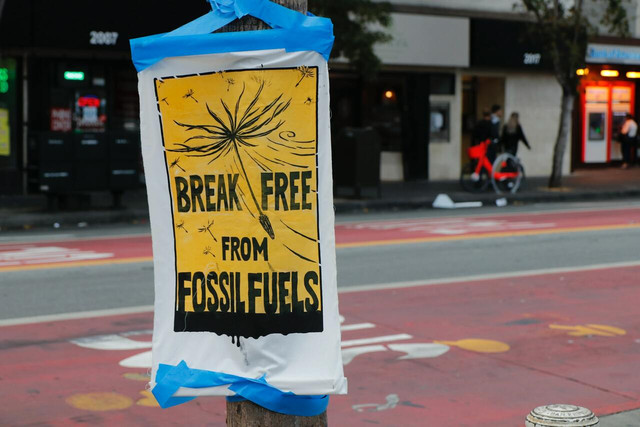


The evidence would suggest that future fracking and a ban on fracking could both present dire consequences for many Americans. Many feel the solution lies in more environmentally-friendly — or green — fracking practices. Some researchers are adding CO2 instead of water to the mixture used in fracking and feel it could boost oil and gas extraction and help fight global warming at the same time.
Other companies are developing techniques to use recycled frack water, to replace diesel-powered drilling equipment with engines or motors powered by natural gas or solar energy, and to find and seal leaks that allow methane to escape.
A British company is developing a drilling technology called Octopus that creates hundreds of ‘micro laterals’ that emerge from a vertical or horizontal well bore — eliminating the risk of earth tremors. There is no use of additional water or materials, which negates the risk of pollution and adverse effects on humans and wildlife.
Although no agreed solution or compromise has been reached globally, any moves towards greener fracking and greener energy will be welcomed. Check out our article for everything you need to know about fossil fuels to discover the true effects they are having on our planet.
Read more:
- The 6 Types of Renewable Energy – And Why We Need Them Now
- How to Save Money on Gas in 2022 & Do Something for the Environment
- 9 Recycling Mistakes You Should Avoid
Do you like this post?






